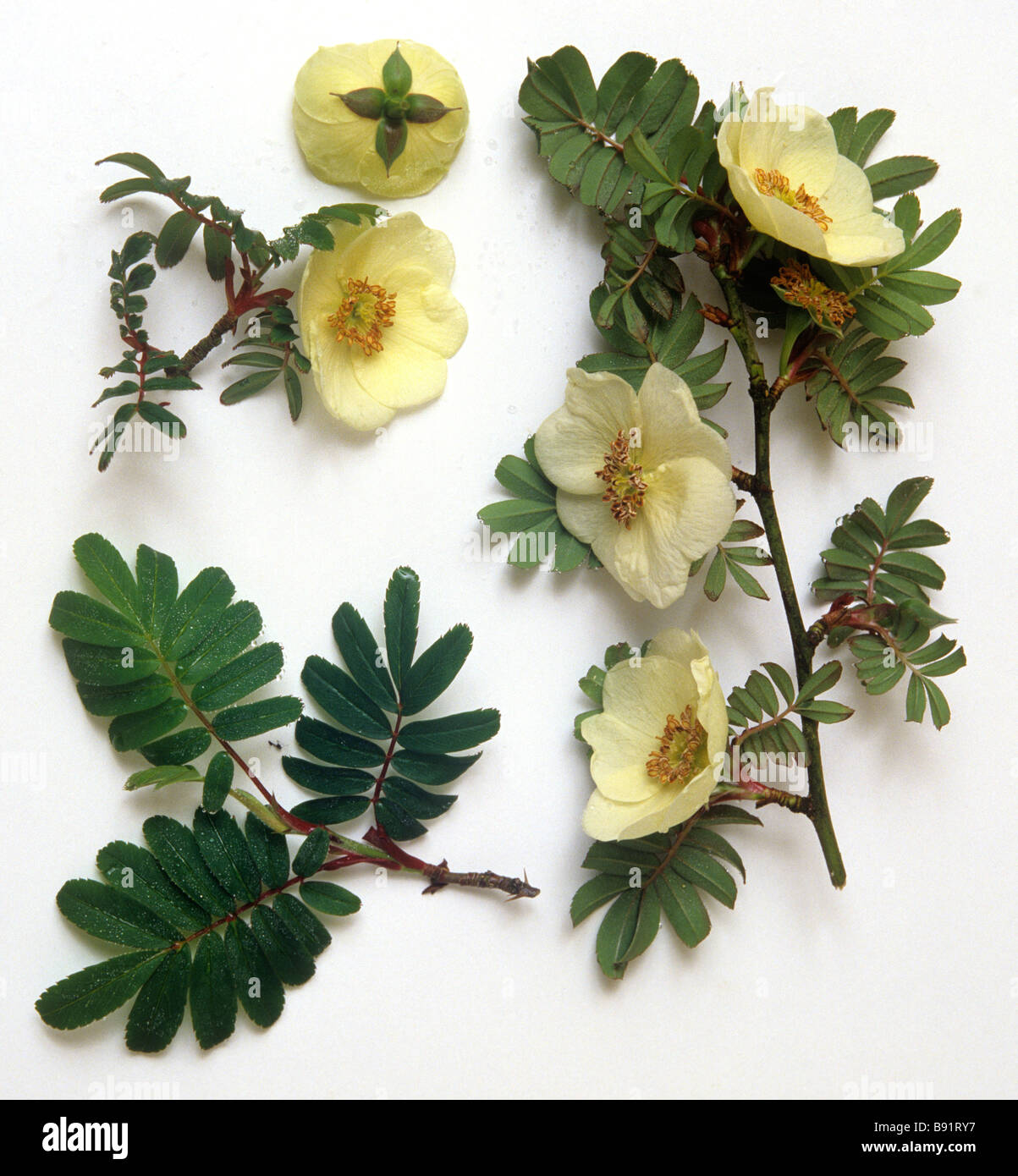Rosa sericea subsp sericea flowers

Image details
Contributor:
Roger Phillips / Alamy Stock PhotoImage ID:
B91RY7File size:
74.8 MB (3.6 MB Compressed download)Releases:
Model - no | Property - noDo I need a release?Dimensions:
4921 x 5315 px | 41.7 x 45 cm | 16.4 x 17.7 inches | 300dpiMore information:
Rosa sericea subsp. sericea A spreading shrub with very varied leaves and nodding white or cream flowers in late spring. The arching shoots, densely covered with hairs, bristles, and prickles, can reach 10 ft (3 m); strong new shoots spring up from the base. The deciduous leaves have seven to eleven often narrow, hairy leaflets. Solitary flowers 1–2 and a half in (2.5–6 cm) across with usually five, sometimes four, sepals and petals are followed by round to pear-shaped hips of dark purplish-crimson, scarlet, orange, or yellow, on narrow stalks. Native of the Himalayas from northwestern India and northern Bhutan to western China, growing in hedges, on the edges of forests and streams and in scrub, flowering in May. Subsp. omeiensis differs in having less hairy leaves, with 11 to 19 leaflets and often with a red central stalk and stipules, and usually pure white flowers, always with four sepals and petals. The fruit tapers into a fleshy stalk, and is variously coloured and sometimes bicolored; it may be ripe as early as July. It is found mainly in China, in Yunnan, Sichuan, and Hubei, but extends west to Nepal. The form commonly grown is f. pteracantha, the wingthorn rose, with large, flattened, red thorns, which can be nearly 1 1/2in (4 cm) wide at the base. The subspecies do not seem to be well separated in western China: many plants from there have fruit with narrow stalks. However, the extremes are very different, western Himalayan plants being generally hairier, with longer, narrower leaflets. As general garden plants, the ordinary forms are good for their delicate tracery of foliage, the whole shrub looking like a giant fern set with wide, white bells along the branches. The best forms of pteracantha have very striking stems, especially when the plants are growing strongly and have had good soil and plenty of water in the growing season; the translucent thorns are wonderful with the sun shining through them. Wide, red thorns are found in other species to